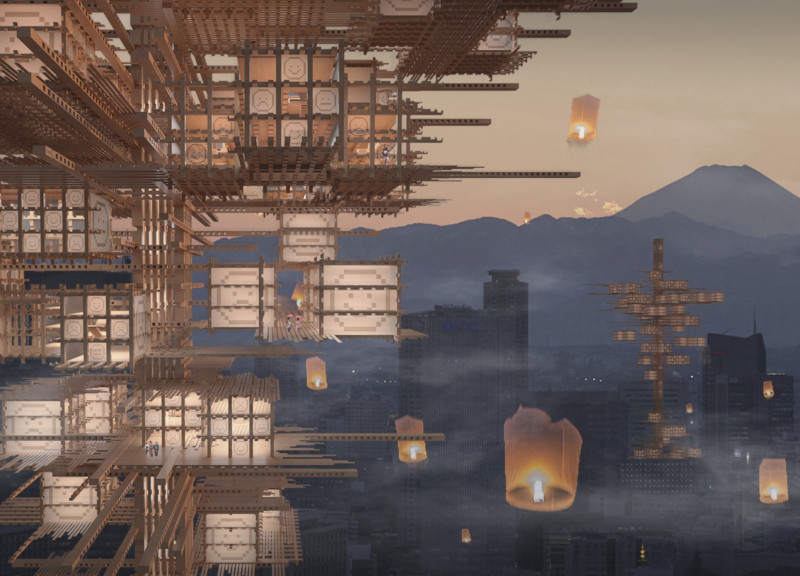5 key facts about this project
The Improved Wooden Dougong Modular Structure is located in Shinjuku, Tokyo, focusing on issues of discrimination against women. It functions as a refuge and resource center for those affected by domestic violence, offering vital services such as employment assistance and legal support. The design emphasizes flexibility, allowing it to adapt to the changing needs of its residents while fitting within the demands of urban life.
Modularity and Flexibility
The building is designed with a modular framework that can expand or contract based on the number of occupants. This flexibility is crucial for addressing the varying needs of temporary housing. By allowing different configurations, the structure can adjust to accommodate changes in demand. This adaptability enhances the building's functionality and makes it a responsive solution for urban challenges.
Cultural Relevance and Construction Techniques
The design draws on traditional construction methods, particularly the mortise and tenon joint. This technique supports a sturdy framework where many components work together effectively. It honors local building traditions while creating spaces that feel cohesive and supportive. The use of these time-tested methods not only ensures reliability but also adds an aesthetic quality that resonates with the surrounding cultural context.
Public Expression and Community Engagement
A notable aspect of the building involves the integration of non-commercial billboards on its facade. These billboards serve as outlets for personal expression, allowing residents to share their experiences through modern digital means like memes. This feature sets the building apart from its commercial surroundings, providing a platform for voices that often go unheard. It fosters a sense of community and encourages dialogue around healing and empowerment.
In the design, the careful detailing of each module showcases a blend of function and cultural significance, creating a space that is both usable and meaningful. The thoughtful approach reflects a commitment to serving the community while respecting its history and context.



















































